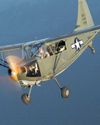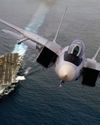Try GOLD - Free
TALES OF THE 21
Flight Journal
|May - June 2025
Lethal Cold War icon

It was late late—or maybe early early—and Robin Olds was holding forth as only he could. After the bar had closed, Robin was still talking fighters, specifically the F-4 versus the MiG-21. He pounded a fist on the table. Then, in that deceptively soft voice with Yosemite Sam overtones, he said, “The best flying job in the world was a MiG-21 pilot at Phuc Yen. Hell, the way we fought that (bleeping war, if I had been one of them, I'd have got 50 of us!”
In a war where the MiG-17, -19 and -21 were code-named Red, White and Blue, two of Robin's four victories were “Blue Bandits.”
The MiG-21 (NATO "Fishbed") has been touted as the most successful fighter jet, but nobody has defined “successful.” If it's numbers built, the MiG-15 leads the list with some 18,000. But with more than 11,400 produced in fellow-traveling nations, the 21 retains the title as most-built supersonic fighter jet ever. (The MiG-23/27 Flogger is second with 6,000+). Additionally, the 21 probably takes the prize for distribution: some 55 nations, including about a dozen as of 2023.
Development
The project leading to the MiG-21 began in 1954, and its rapid progress is attributed to Artem I. Mikoyan, who had been designing airplanes since 1937, was teamed with Mikhail Y. Gurevich, as both men emerged from the Polikarpov organization. In 1939, their collaboration became institutionalized as the Mikoyan-Gurevich sector of No. 1 Osoaviakhim aircraft plant, hence the designation MiG. (It was also a pun: reportedly, in Russian “mig” means “immediately.”) Subsequently, the arrangement was formalized as an independent design bureau. Though eventually MiG was widely considered “Mikoyan," the two principals maintained a cordial, efficient working relationship.
This story is from the May - June 2025 edition of Flight Journal.
Subscribe to Magzter GOLD to access thousands of curated premium stories, and 10,000+ magazines and newspapers.
Already a subscriber? Sign In
MORE STORIES FROM Flight Journal

Flight Journal
ELLIPTICAL ELEGANCE
Flying and evaluating the Seafire Mark III
4 mins
November - December 2025

Flight Journal
IRON DOG
Fighting the Pacific and the P-39 at the same time
14 mins
November - December 2025

Flight Journal
Fighter Pilots: A Warrior Clan
TAKE A HARD LOOK at the two young men in these photos. Do they look as if they were bent on killing one another? On the left we have a young, unknown enlisted Japanese pilot standing in front of a Nakajima Ki-27 \"Nate,\" one of Japan's earliest monoplanes that led to the much vaunted Zero.
3 mins
November - December 2025

Flight Journal
KEN WALSH THE FIRST CORSAIR ACE
Medal of Honor pilot's combat adventures
12 mins
November - December 2025

Flight Journal
Big Chief's Little Chief
Thunderbolt action with the Wolf Pack
11 mins
November - December 2025

Flight Journal
ENEMY PILOTS SPEAK Voices from the other side
All too often American students of air warfare forget that enemy aircraftwhether Messerschmitts or MiGs-were flown by human beings with the same motivations and traits as Allied airmen. More often than not, the only difference between friend and foe was the paint on the airplane and where they landed. Therefore, we've assembled a variety of accounts from WW II Axis fighter pilots, men who were more than simply targets.
11 mins
November - December 2025

Flight Journal
FLYING THE FW 190
A legend gets checked out in the Butcher Bird
15 mins
November - December 2025

Flight Journal
DOUBLE-THEATER ACE
The fearless missions of legendary fighter pilot Col. John D. Landers
12 mins
November - December 2025

Flight Journal
WARBUG IN THE PACIFIC
Surviving combat in a Stinson OY-1/L-5
10 mins
September - October 2025

Flight Journal
WINGS OF THE FLEET
Celebrating the U.S. Navy's 250-year legacy
9 mins
September - October 2025
Listen
Translate
Change font size

